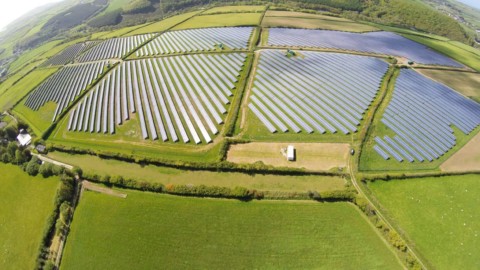By Jo Egan, Chief Customer Officer, AGL
As the new year gets underway, the pace of energy transition continues to accelerate. AGL Chief Customer Officer, Jo Egan, shares her views on some of the key developments and big trends shaping the energy market in 2023.
1. Customers focused on managing energy costs
We are acutely aware of the cost-of-living pressures, including the rising cost of energy, affecting our customers and all Australian households and businesses. Geopolitical events including the Russian invasion of Ukraine are having a material impact on the price of resources which continues to flow through to gas and coal prices globally and in turn impact our customers.
Our role in Australian homes as an essential service provider means we have a responsibility to take a multi-faceted approach – addressing not just the ‘now’ in terms of prices and hardship assistance, but also by taking a longer-term leadership approach around issues like future supply, innovation and how we lead the increasing electrification of our economy.
We expect the trend of consumers seeking alternative and sustainable solutions to managing energy costs in their homes and businesses will likely accelerate in 2023. Behind-the-meter products such as solar, batteries, and electric vehicles (EVs) are no longer emerging concepts appealing only to innovators and early adopters. While adoption of solar is high – more than 30 per cent of Australian households have a rooftop solar system – interest in EVs and batteries is certainly growing as consumers from all walks of life look for ways to lower their energy costs and reduce their emissions.
People are key to the energy transition. In 2022, the AGL Customer Council wrote an open letter urging governments, energy ministers, regulators, department heads, policymakers and market bodies to work together to ensure all Australians have an opportunity to participate in – and reap the benefits of – the energy transition. For this, 2023 will be a pivotal year.
2. Growth in decentralised, flexible energy
Australians have already embraced solar in their homes and businesses. Solar on its own, however, is a passive energy source which can only be used when the sun is shining. Batteries provide consumers with flexibility in how and when to use the energy they generate. They also enable the decentralisation of the energy grid, meaning that customers produce energy for themselves and can sell their excess energy back to the grid as well as purchasing energy from the grid when they need to.
AGL’s industry-leading virtual power plant (VPP) rewards customers for providing access to their stored energy to support wider system reliability. As the market matures, consumers will be provided with more services that unlock value for their stored energy. The Federal Government’s $200 million Community Batteries for Household Solar Program grant will provide funding for 400 community batteries to be rolled out across communities. This will drive more decentralised, flexible energy that can provide wider systems and market benefits.
AGL’s Peak Energy Rewards program is another example; consumers can be rewarded for reducing their energy consumption during peak periods (up to two hours per event), helping take stress off the system. As energy costs rise and consumers become more aware of managing their energy use, we anticipate consumers will play an increasing role in the operation of the electric grid by reducing or shifting their electricity usage during peak periods.
3. Rising expectations for sustainability
Over the past couple of years, there’s been a decisive shift in community attitudes towards climate change which has resulted in rising expectation of faster action and greater accountability from government and the largest carbon emitters. Energy consumers expect their retailer to be sustainable – 65 per cent of energy consumers globally say sustainability is important for an energy provider which is the highest of any utility or service sector.
Customers also want to be part of the solution. There is a growing demand for products and services that can help customers reduce their carbon footprint which means improved efficiency and sustainability. We have seen strong growth in the past year for our carbon neutral options across both residential and business customers. This is a simple way for customers to be more sustainable and we expect the strong uptake of carbon neutral products to continue in 2023 and beyond.
Large energy users are increasingly seeking tailored electrification solutions to meet their net zero commitments and drive down energy costs. We’re responding to these needs by rapidly expanding our decarbonisation and energy management solutions. We partner with our Commercial and Industrial customers to understand their specific needs, how we can help them reduce their emissions and lower their energy costs by installing tailored solar and storage solutions. In many cases this is not only lowering carbon emissions but also costs, an ideal outcome for our large customers. We expect that demand for customised partnerships to continue to grow this year as industry works with retailers on specialised sustainable energy solutions.
4. Customers embracing electrification
Consumers are also looking for products that have lower energy running costs and there is a growing trend towards choosing electricity for transport, cooking and heating as electricity provides a more efficient and sustainable way to consume energy. Australian Energy Market Operator (AEMO) predicts a 23 per cent increase in electricity consumption from 2020 to 2030.
Residential consumers are turning to more efficient reverse-cycle heating and cooling and upgrading to more efficient hot water systems and electrical cooking. Spurred on by rising gas costs and government schemes encouraging people to switch from gas to electrical appliances, we expect this trend to continue as people gradually replace gas appliances and hot water systems with electrical appliances. The push towards faster electrification is also being supported by changes to government policy in some states.
The National Construction Code amendments due in the second half of 2022 require new houses and apartments to meet a 7-star efficiency rating. The Federal Government’s more ambitious EV plans, supporting the aspirations of state governments, are starting to have an impact. We expect EV purchases to increase in 2023 as a greater variety of EVs come on to the market and more consumers recognise the benefits of investing in an EV.
As well as being cheaper to run than a petrol-fuelled vehicle, EVs also have the potential to unlock opportunities for consumers to utilise their EV as a giant battery to power their home or to support the energy system at times of peak demand. AGL is currently undertaking an ARENA-funded trial to manage 200 residential customers’ EV smart charging stations, using technology to ensure customers cars are charged at the most optimal time for the grid, while also meeting their driving needs. AGL’s EV subscription model provides access to an EV without the upfront costs. Customers can swap, upgrade or cancel at any time, while trying out different EV models in an all-inclusive charge.
5. Digital by default
Critical to the success of the energy transition is data and digitisation. Digitisation is driving simplicity and improving access for consumers. Consumers across all age groups now prefer to engage digitally for 9 out of 10 of their energy interactions. If there’s a problem, however, some consumers want to be able to resolve it quickly by talking to someone. Companies that invest in the digital experience and do it well will be rewarded with greater consumer trust, loyalty, and retention.
The introduction of Consumer Data Right will give consumers more control over their data by allowing them to choose who they want to share it with and how it should be used, empowering them to make faster and more informed decisions. This will drive retailers to better analyse the data available and develop products and services more in line with consumer behaviour and needs.
The increase in cybercriminal activity observed in Australia and abroad is a growing concern. It is imperative the industry remains vigilant and builds robust cybersecurity measures to protect consumers’ personal information. This is the foundation on which consumer trust is built.
Whatever 2023 brings, one thing’s for sure: the energy transition is accelerating, and developments in the energy market are unlikely to disappear from the front pages of our newspapers anytime soon. This whole-of-economy change requires industry to innovate and partner, working hand-in-hand with governments and communities to ensure a smooth and orderly transition for all.


















